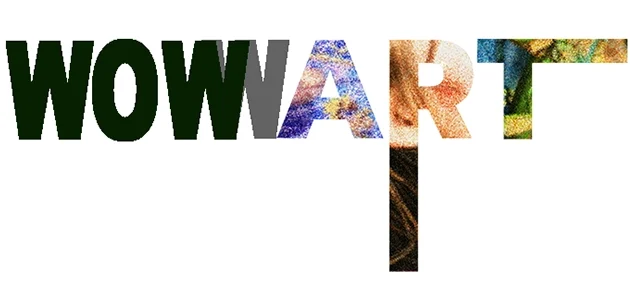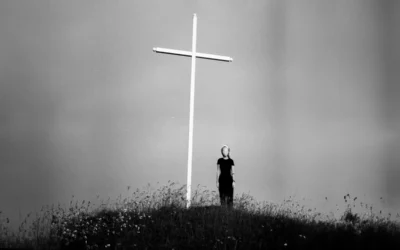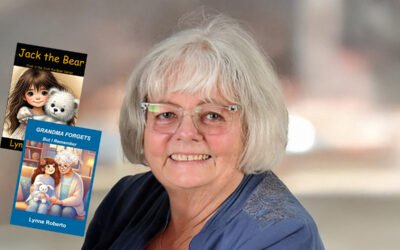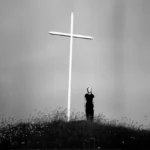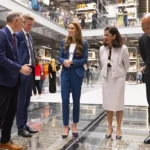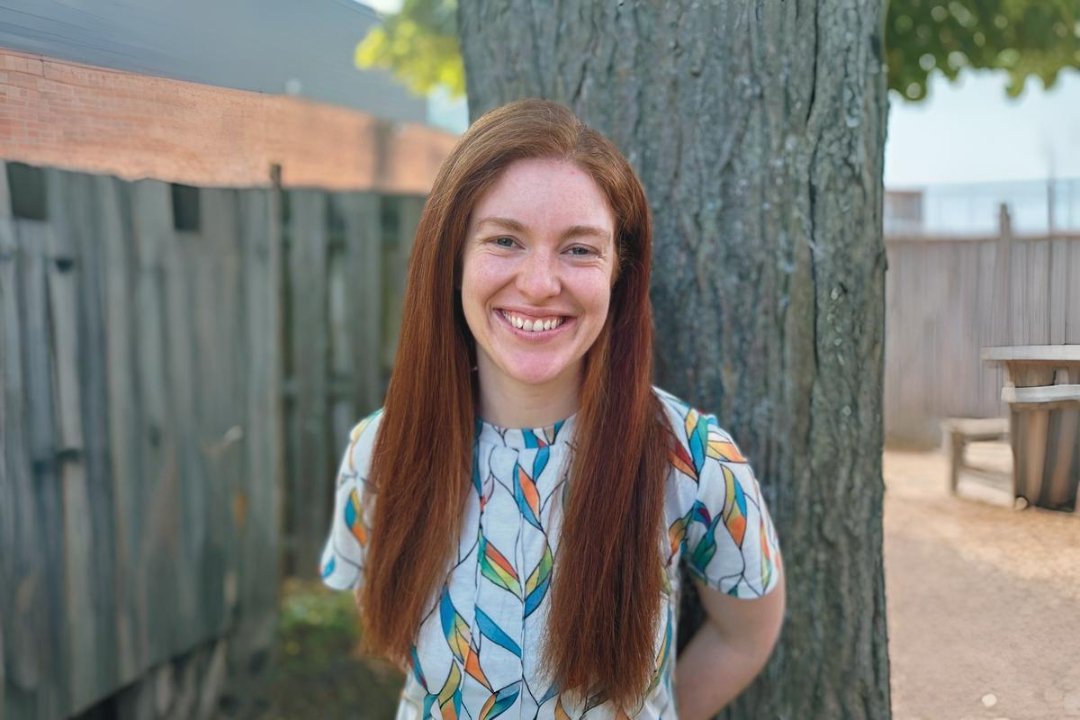Benjamin Degen Explores Interconnection Through Vibrant Imagery
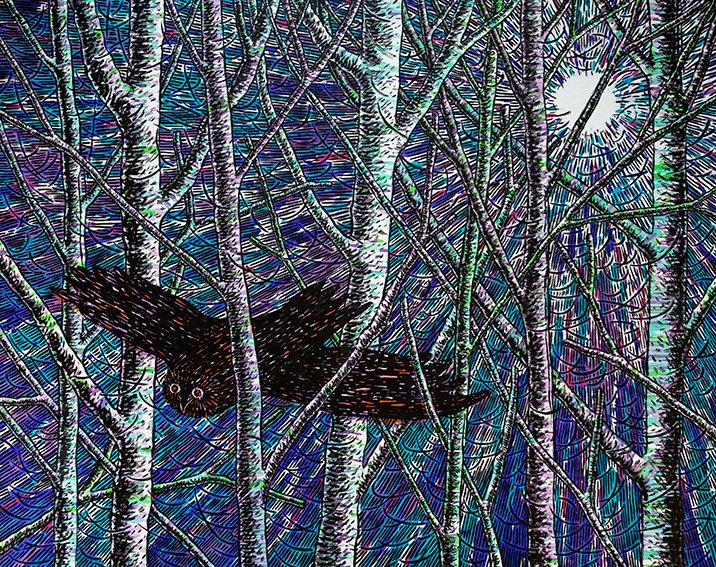
Moments Of Touch And Transformation In Everyday Life
Benjamin Degen reveals his artistic philosophy, exploring interconnection, vibrant color, and transformative imagery inspired by human intimacy, nature, and collective consciousness.
Benjamin Degen’s artistry is a profound meditation on the human experience, skillfully merging the ordinary and the transcendent. His work invites us to linger in moments often overlooked—subtle gestures, intimate connections, and the vibrant interplay between the natural and human-made worlds. Through his distinctive mark-making and dynamic use of color, Degen transforms these scenes into resonant images that hum with energy and possibility. His paintings are not just visual compositions but portals, offering viewers an opportunity to reflect, connect, and reimagine their place in the web of existence.
Born in Brooklyn in 1976 and now residing in Beacon, New York, Degen has established himself as both an artist and an educator. His teaching career spans esteemed institutions such as The Cooper Union, Rhode Island School of Design, and The Metropolitan Museum of Art, where he has inspired countless students to explore their creative potential. His paintings, held in prominent collections like The Museum of Modern Art and The Collezione Maramotti, have been exhibited across the globe, underscoring his ability to communicate universally through deeply personal imagery.
In this interview, Degen offers a rare glimpse into the philosophy and processes that shape his art. From his rhythmic, iterative drawing practice to his nuanced exploration of color as a resonant force, his reflections reveal a deep commitment to understanding and expressing interconnection. Through his thoughtful responses, Degen invites us to consider how art—like life—is an ongoing act of creation, discovery, and transformation.
In In Waves, your work captures moments of human intimacy and touch that we often overlook. How do you select these everyday scenes, and what draws you to transform them into something extraordinary?
When I draw, I’m observing an idea, object, or phenomena closely. The drawing process is repetitive and iterative like breathing: make one mark and then another. It brings me deeper and deeper into relationship with what I’m looking at. This sense of interrelationship is the subject of the images. They are everyday scenes that involve the intimacy of touch: How we touch the earth and how the earth touches us; How we touch each other. There is an awareness that arises in this contact. It is the feeling I get when I feel my feet touching the ground solidly ‘here’ where I stand, while my eyes touch the horizon ‘there’ where I’m looking. In this simultaneity of an unbroken line, I feel connected to the fullness of the moment. This moment is delicate, impermanent, miraculous. The elements have come together into precisely this arrangement: this stick, that shell, a mountain, a cloud. Making a painting is an exercise in this kind of meditative provisional arrangement: you take very ordinary materials- pigments (made from earth and minerals), oil (from nuts or seeds), fabric, wood- and you put them together into an object that turns these materials into something else: Image. There is a sublimation/transfiguration/transmogrification where this crude matter becomes something different than the sum of its parts. The basic elements, shapes, objects, figures become unified into a resonant chord.
Your paintings have been described as vibrating with a particular energy that elevates ordinary experiences. What techniques or approaches do you use in your mark-making to achieve this sense of vitality?
Painting allows me to make a two-dimensional image that isn’t fixed in two-dimensions but is free to move in three and four-dimensions. The main subject of my paintings is interrelationship, which is dynamic by nature: Everything is doing everything everywhere all at once together. I try to paint this from observation. The marks are repetitive and iterative, organizing into pattern and coalescing into form. The two-dimensional plane of painting, rather than presenting a limitation, allows for a space which can hover between multiple representational realms like a hologram. It can simultaneously activate a wide range of depiction: abstraction and representation, illusionistic space, diagrammatic space, and text space. The painted image can be, at once, completely flat and infinitely deep. The picture appears to the viewer as still, while it is also animated by the movement of the gestures which created it. As a picture vibrates between pattern and form, it can be free to change. A picture can call like a window or mirror, asking the viewer to look in and see themselves reflected: as themselves, as a symbol, as an archetype, as someone that has happened a long time ago, or as someone who is about to happen. Just as physicists aspire
to the encompassing ‘Theory of everything’ I think painters similarly aspire to the ‘Painting of everything.’ The Harvesters by Pieter Bruegel the Elder is a painting of everything. It depicts multiple scenes in one large landscape: people harvesting hay, people celebrating and people eating and resting from the harvest. In the foreground there is a group sitting in the shade of a tree. Each time I visit the painting at the Metropolitan Museum, I feel myself transported, becoming a part of these circles of action. There is a woman dipping her spoon into her bowl and she looks directly at me. I feel like I am eating with them. She’s been dipping her spoon that exact way for almost five hundred years, but every time I see her, the action seems fresh. It is happening now for the first time, and I am part of it. That’s what a painting can do! It is a connection to human experience on the deepest most ordinary level.
The colors in pieces like Mångata seem to push against one another, creating a dynamic interaction on the canvas. Could you talk about your approach to color and how you choose these bold combinations?
Color creates the space of the picture, not only the graphic or compositional space but, importantly, the resonant space. The color creates chords like musical notes. I studied Indian Ragas with Michael Harrison who was a student of Pandit Pran Nath. In a Raga, the entirety of the musical composition happens within a specific set of notes. Over time the composition builds by creating changing resonant ‘colors’ through different combinations of this fixed set of notes. Unlike western music where there is a changing progression of chords, most Ragas maintain a fixed drone and expression is achieved by setting up various resonances within the fixed set of notes against the background drone. In my paintings there is a dominant color chord within the painting, and I use a specific spectrum of colors to improvise on top of this structure. The first step of a painting is sketching the basic composition. The second step is selecting the color spectrum. I experiment, making sets of 7-20 colors which I paint on strips of canvas. I’ve got hundreds of these dating back twenty years. I never throw them out. I paint and re-paint them, changing the colors slightly and rearranging the order that I put them in. You can never tell how a color will react to another color until you try it. I experiment with how they resonate with each other; The intervals between the colors; How each individual color corresponds to its complimentary, analogous and triadic colors within my experimental set. I get them fine-tuned before I start the painting- Like tuning an instrument. I want them to resonate in a very particular way. The smallest variation in intonation between colors can change the feeling completely. It is like playing an instrument tuned to just-intonation or equal-temperament or mean-temperament. The smallest micro-tonal difference in resonance can change the feeling of the entire composition.
In Way, the figure’s serene, confident stance evokes a sense of hope and renewal, similar to the Star card in tarot. Do tarot or other symbolic references frequently inspire your compositions, and if so, how do you integrate these into your work?
The compositions usually appear through a series of intuitive drawings. Elements combine and recombine in various in compositions. Some of the elements are familiar, others are cryptic. Sometimes the image comes all at once, at other times it comes piece by piece. I do a lot of walking- in cities, in nature, next to rivers, in mountains. I always keep a sketchbook. I’ve had many pictures appear while I’m waiting for the subway, or when I’m on a train. I’m not sure if they come in dreams, but they often seem clearest in the first minutes after I wake up, or when I am meditating. I don’t consciously include symbols, metaphors or archetypes into the compositions. Often, I only recognize them in the picture much later and sometimes only when someone else points them out to me. I assume this index of imagery is always in my mind consciously and un-consciously. Each one of us carries a shared index of pictures- the cumulative collective visual consciousness of 200,000 years of image making homo sapiens. It goes back even further in our DNA, I’m sure, to a place that is pre-human. We all seem to share a language of symbols in visions and dreams. I think of Joseph Campbell’s ‘Hero with a Thousand Faces’ and how basic archetypes reappear through diverse cultural mythologies. When my dog is dreaming, I watch her and wonder what symbols and narrative archetypes appear to her. When I’ve camped for periods of time away from humans in the company of old trees, the visual vocabulary of my dreams and visions changes, leading me to wonder if we are not only ‘remembering’ the images from within our shared human collective consciousness, but also actively receiving and sharing them with all proximate consciousnesses. Just as color creates a chromatic resonance, symbols create a narrative and ontological resonance. The small picture allows us to see the big picture- the drawing of the ‘Big Dipper’ or ‘Big Bear’ allows us to name and to see the constellation of stars. It gives us a framework for orienting ourselves and understanding relationships between things that are very large and distant. Symbols give us a structure to build new meaning beyond what we already know. The figure in Way remains cryptic to me. As far as I can understand it, she appeared as a guide. She is me. She is a wiser part of me who is at home in a space that is foreign to me. In that picture she is holding someone’s hand and leading them. That is my hand. It may be a picture of me leading myself, which is the process of making a painting. Painting records who we are- both the part we know and the part we don’t. I don’t fully know the figure in Way, as I can’t fully know myself. But in some way the painting knows. I hadn’t known I was painting the Star Card from the tarot deck. But there she is. Part of me must have known. Part of me must have held a clear vision of that archetypal character.
Beginning with drawing and building toward a finished painting appears to be a central part of your process. How do those early sketches influence the development of color, composition, and texture in the final piece?
Part of my process is intuitive and flexible, and the other part is concrete and sequential. I have worked as a carpenter and a furniture-maker. I’ve always built things, and I approach ideas from a builder’s perspective. To make a painting, I make compositional sketches to understand the structure of the picture in line and plane. I make color maps to figure out the chromatic structure of the overall composition. I may make mark maps to decide where certain types of marks will be. When the compositions become very dense, I want to make
sure there is enough differentiation for the picture to maintain clarity. I make things overly complex, and the image starts to vanish. I like Vulliard paintings where the pattern and the chroma become so dense that the image is just on the edge of obliterating into a field of abstraction. Kathrine Bradford paintings do that as well with layering. I like when things are just on that edge of solidifying and dissipating. It is beautiful when an activated field becomes an image through the act of looking. The viewer is a participant in making the image take form- That feeling of finding the image and following it. I like that in the music of My Bloody Valentine: through layers and layers of distortion and an undulating sea of reverb, the melodic line coalesces and draws me forward through the song.
Your exhibition highlights the small, fleeting moments that connect us to each other. What role do you believe art can play in encouraging viewers to appreciate these aspects of everyday life?
Image is a powerful tool for vision and transformation. I think everyone can draw, and I think everyone should. I teach drawing as a process for connecting to the energy of being, seeing, thinking, and doing which lives within each of us. Everyone has the capacity to connect with this energy. Draw! It doesn’t need to look ‘good.’ Find a way that feels playful and mysterious and exciting to you and do it. If you need a push, take a class or get a group of friends together and do it. Drawing is a concrete and direct process for envisioning ourselves and our world- for making this vision real. Drawing transforms ideas into the physical objects and structures that shape our daily lives. Image-making is a basic human need. We need to actively and constantly tell the story of our world to experience it fully.
